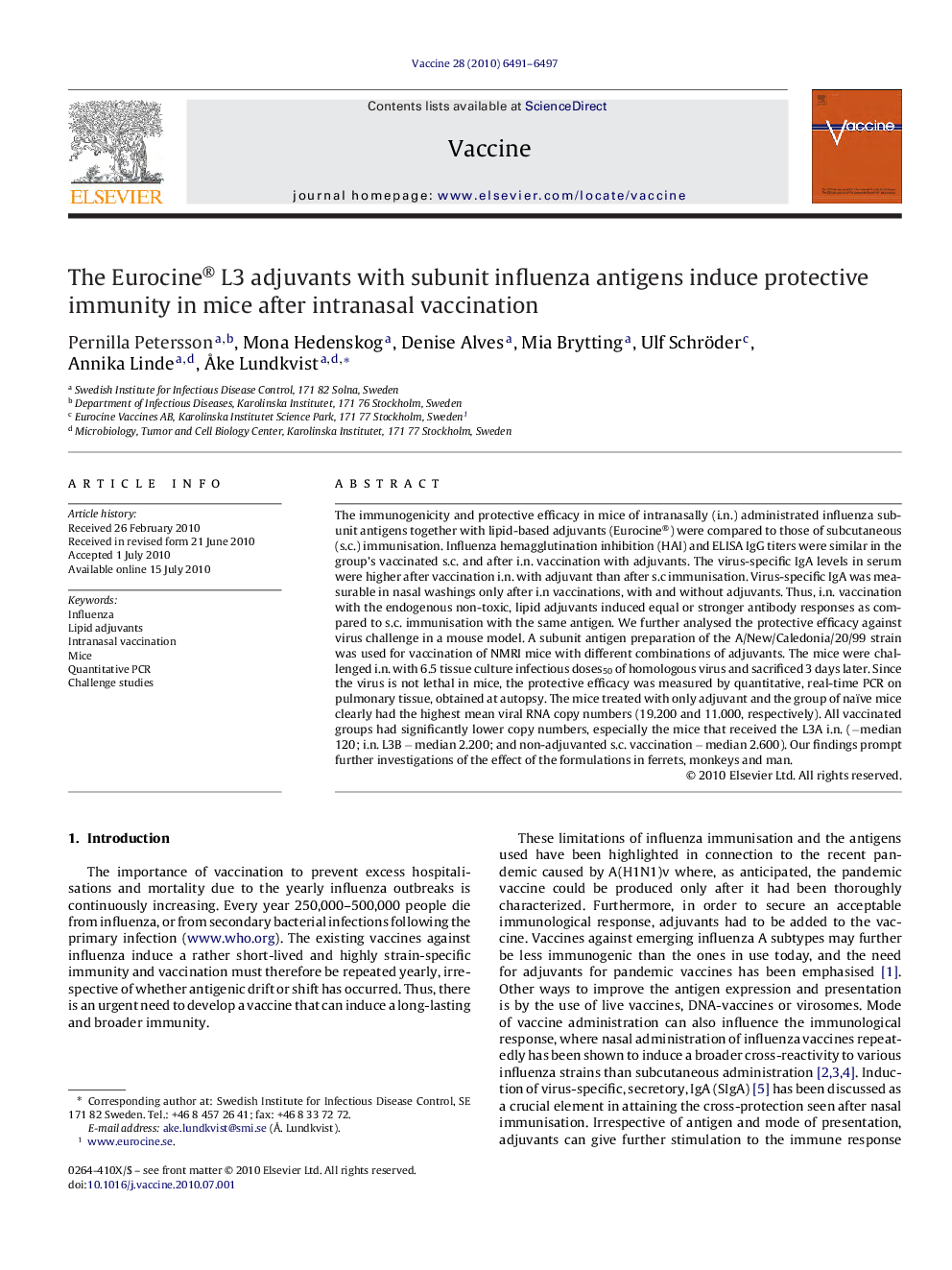| Article ID | Journal | Published Year | Pages | File Type |
|---|---|---|---|---|
| 2403966 | Vaccine | 2010 | 7 Pages |
The immunogenicity and protective efficacy in mice of intranasally (i.n.) administrated influenza subunit antigens together with lipid-based adjuvants (Eurocine®) were compared to those of subcutaneous (s.c.) immunisation. Influenza hemagglutination inhibition (HAI) and ELISA IgG titers were similar in the group's vaccinated s.c. and after i.n. vaccination with adjuvants. The virus-specific IgA levels in serum were higher after vaccination i.n. with adjuvant than after s.c immunisation. Virus-specific IgA was measurable in nasal washings only after i.n vaccinations, with and without adjuvants. Thus, i.n. vaccination with the endogenous non-toxic, lipid adjuvants induced equal or stronger antibody responses as compared to s.c. immunisation with the same antigen. We further analysed the protective efficacy against virus challenge in a mouse model. A subunit antigen preparation of the A/New/Caledonia/20/99 strain was used for vaccination of NMRI mice with different combinations of adjuvants. The mice were challenged i.n. with 6.5 tissue culture infectious doses50 of homologous virus and sacrificed 3 days later. Since the virus is not lethal in mice, the protective efficacy was measured by quantitative, real-time PCR on pulmonary tissue, obtained at autopsy. The mice treated with only adjuvant and the group of naïve mice clearly had the highest mean viral RNA copy numbers (19.200 and 11.000, respectively). All vaccinated groups had significantly lower copy numbers, especially the mice that received the L3A i.n. (−median 120; i.n. L3B − median 2.200; and non-adjuvanted s.c. vaccination − median 2.600). Our findings prompt further investigations of the effect of the formulations in ferrets, monkeys and man.
